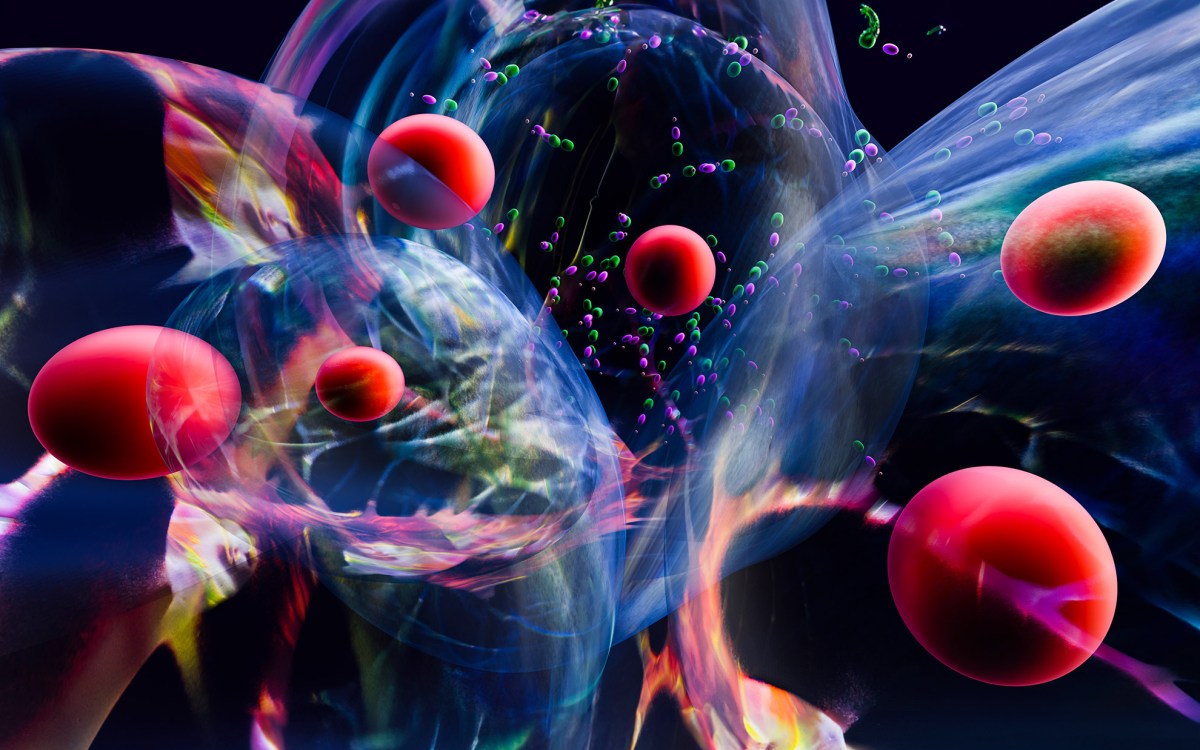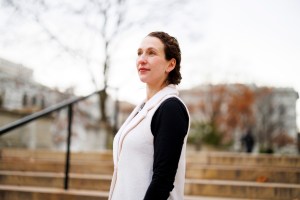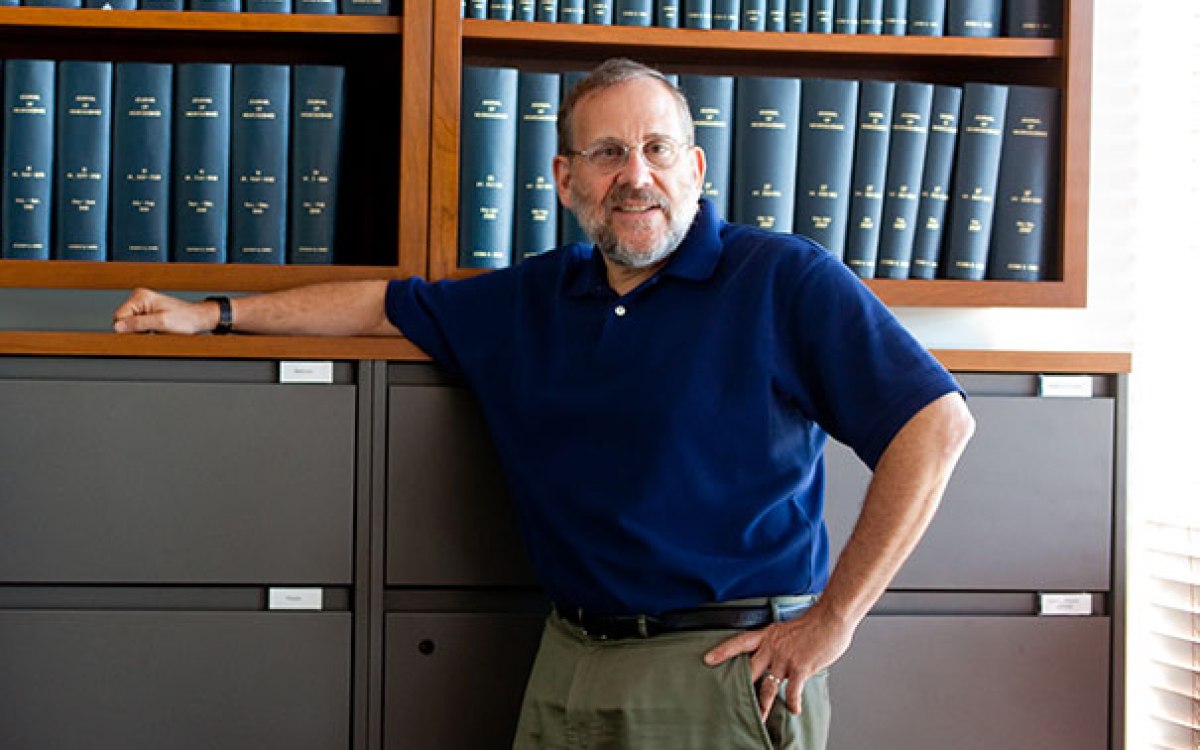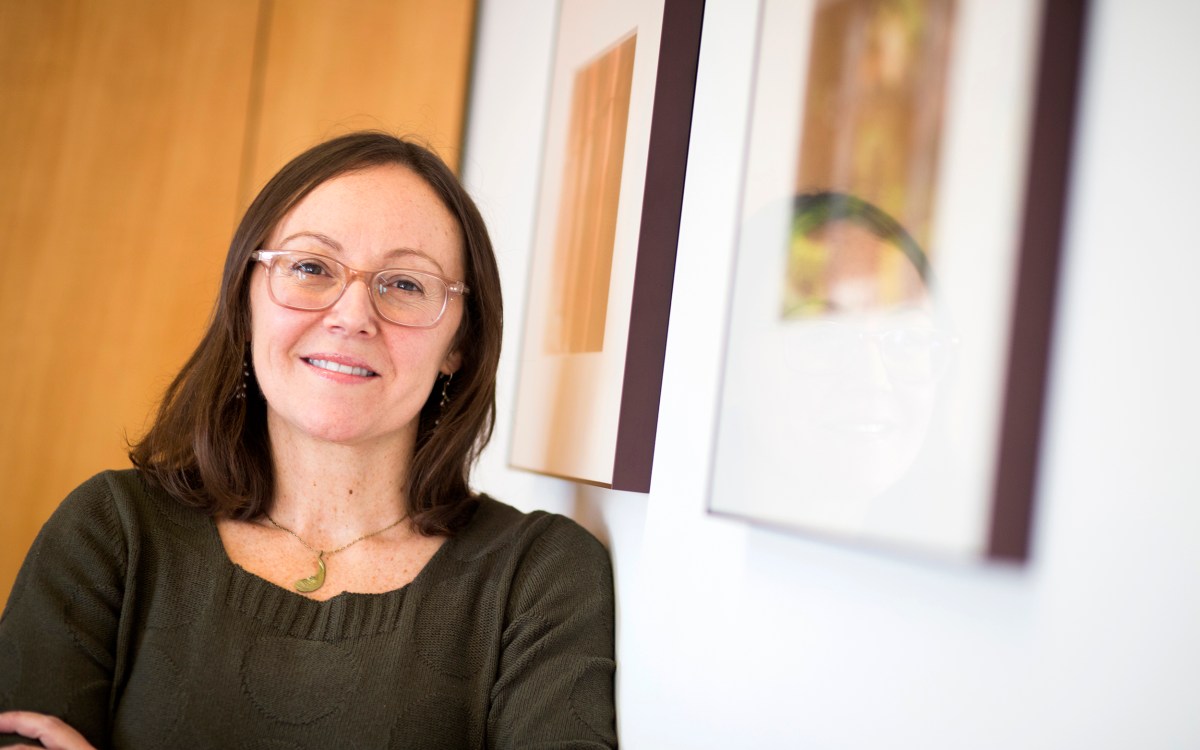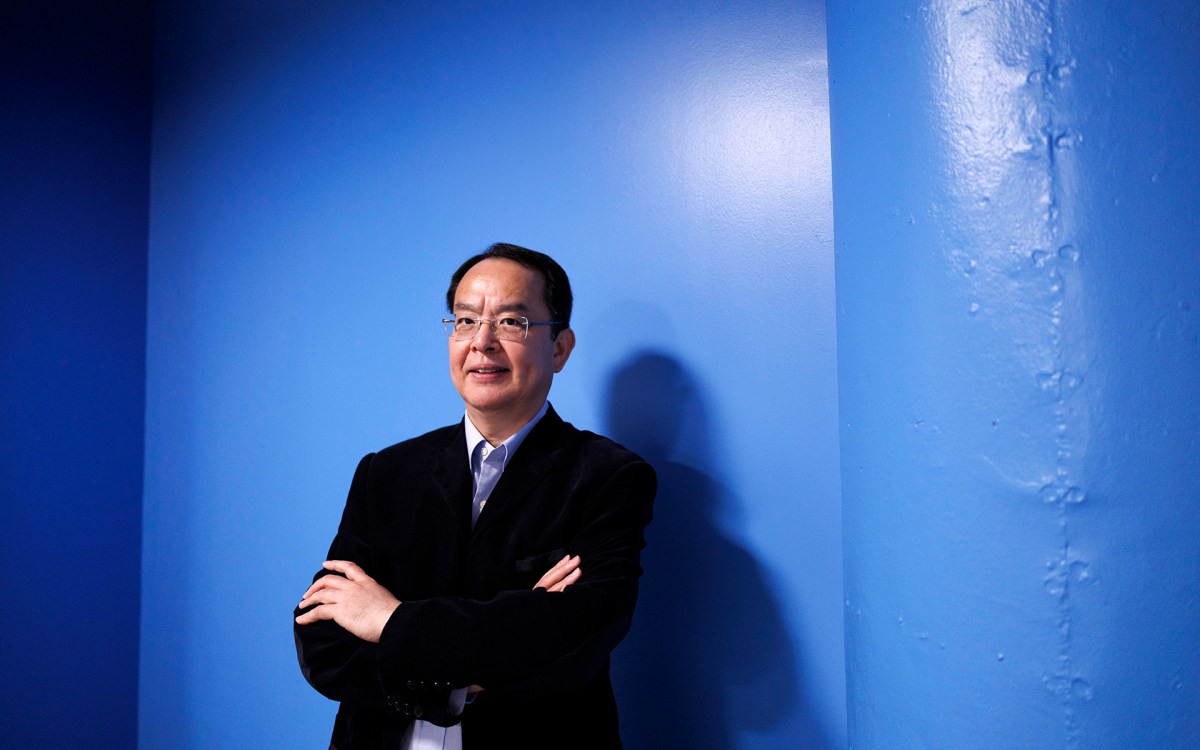
Harvard Provost Alan Garber talks to the Gazette about the recent symposium on neuroscience, science broadly at Harvard, and the growing interdependence among all scientific disciplines.
Rose Lincoln/Harvard Staff Photographer
Harvard’s immersion in neuroscience
Provost Garber discusses efforts to deepen cooperation, community in surging field
The Harvard Provost’s Office hosted a symposium last month on neuroscience as part of an effort to create a greater sense of community among faculty members from diverse Schools and affiliated institutions, and let them hear about work that might complement their own.
Provost Alan Garber said that the event, the first of several on life science topics, provided a compelling view of the work on neuroscience happening at Harvard and was well-attended despite the nor’easter that was blowing outside.
Garber, an authority on health care policy who holds an M.D. and a Ph.D. in economics, sat down with the Gazette to talk about the symposium, Harvard’s evolving scientific landscape, and what broad scientific trends he sees.
Q&A
Alan Garber
GAZETTE: Your office recently sponsored a symposium on neuroscience at Harvard. What was the purpose of that meeting, and who attended?
GARBER: About three years ago we organized a major, University-wide review of the life sciences. That review focused on the laboratory-based life sciences activities of three Schools: FAS [the Faculty of Arts and Sciences], Harvard Medical School (HMS), and the Harvard T.H. Chan School of Public Health.
The reviewers, a distinguished group of scientists from outside Harvard, recommended that we create a committee that would help to foster coordination across the University in the life sciences. That committee, which is now called the Life Sciences Steering Committee, suggested that we convene a series of symposia to help create a greater sense of community.
“The Provost’s Faculty Symposium: Insights in Neuroscience at Harvard” is the first such event. Neuroscience is truly a University-wide activity. Teaching and research in neuroscience take place in many locations. Our community is spread across hospitals, including Brigham and Woman’s Hospital, [Boston] Children’s Hospital, Beth Israel Deaconess Medical Center, Massachusetts General Hospital (MGH), and the Dana Farber Cancer Institute. And they’re spread across Harvard Medical School and FAS and the [John A. Paulson] School of Engineering and Applied Sciences. At least 100 Harvard faculty members could be identified as primarily neuroscience faculty. Many more faculty, students, and other members of our community have a strong interest in the topic.
With so much activity and researchers spread across so many locations, it isn’t easy to keep up with what’s going on. We received a good deal of help. The leadership of the Mind Brain Behavior Interfaculty Initiative (Alfonso Caramazza, the Daniel and Amy Starch Professor of Psychology, and Albert Galaburda, the Emily Fisher Landau Professor of Neurology and Neuroscience) and of the Harvard Brain Science Initiative (Michael Greenberg, head of the Department of Neurobiology and Nathan Marsh Pusey Professor of Neurobiology at HMS, and Josh Sanes, the Paul J. Finnegan Family Director of the Center for Brain Science and Jeff C. Tarr Professor of Molecular and Cellular Biology at FAS) helped select the themes and speakers. We hoped that the symposium would bring together people who don’t see each other every day, enabling them to hear about some of the exciting research their colleagues are doing. The Life Sciences Steering Committee was enthusiastic about the topic. The attendance at the meeting proved that the enthusiasm was widely shared.
GAZETTE: Was there an overriding message that you hoped participants left with?
GARBER: First of all, we wanted to communicate the sense of excitement about neuroscience at Harvard and to expose attendees to work at the frontiers. It was a complete success from that perspective. We also wanted to give an opportunity for people united by related intellectual interests simply to connect — to strengthen the sense of community. Everyone I heard from told me that they learned a great deal and were excited to see other researchers, some of whom they were meeting for the first time. I believe that they felt proud about the quality of the work that their colleagues do. And I think people also came away inspired about the kinds of problems that they might work on going forward.
GAZETTE: What is the state of neuroscience at Harvard today? What did you hear from the speakers there?
GARBER: You can’t help but think that this is an extraordinarily exciting time for neuroscience. The presentations and discussions made it seem as though recent scientific advances, along with increasingly powerful research tools, will drive even more rapid progress in the coming years. It isn’t hard to imagine that in 10 or 15 years we’ll have a very different understanding of how the mind works.
Imaging was taken up as a topic by both the morning and afternoon keynote speakers, who are pioneers in the field. In the morning, Bruce Rosen [the Laurence Lamsen Robbins Professor of Radiology at HMS and MGH] spoke about cutting-edge advances in imaging the human brain. In the afternoon, Xiaowei Zhuang [the David B. Arnold Jr. Professor of Science] described groundbreaking advances in imaging at the nanoscale. What they’ve been able to visualize seems almost unimaginable. I’m sure that many people in the audience were thinking about how they could incorporate these advances in their own work.
GAZETTE: How does neuroscience fit into the larger science scene here at the University?
GARBER: Neuroscience itself is defined more by a series of questions to be answered than by a specific disciplinary approach or methodology. In fact, neuroscience brings together people with training in many different disciplines. They include physics, chemistry, statistics, computer science, psychology, economics, molecular and cell biology, regenerative medicine — the list goes on and on. The diversity of tools and perspectives is part of its appeal. It is fundamentally integrative.
GAZETTE: So is it representative of the larger science endeavor here at Harvard because it encompasses so much of it?
GARBER: I think that neuroscience as a field has been at the vanguard of bringing together scientists with different disciplinary training. That is a trend that is occurring throughout the sciences at Harvard.
GAZETTE: How important is regional collaboration and work between institutions?
GARBER: Harvard is blessed not only with an incredible scientific community, but also by its proximity to great academic institutions with complementary expertise, as well as related industries and an intellectually and economically vibrant region in Massachusetts.
For example, the Broad Institute [of MIT and Harvard] and the Ragon Institute of Massachusetts General Hospital, MIT [the Massachusetts Institute of Technology], and Harvard are very successful collaborative ventures, as is the Wyss Institute for Biologically Inspired Engineering, in which our partners include BU [Boston University], MIT, Tufts [University], and Harvard-affiliated hospitals. Our affiliated hospitals are themselves research powerhouses.
And, in the area of education, we have edX [the online course platform led by Harvard and MIT that includes partnerships with dozens of other universities]. Many, many more collaborations are directly between faculty across institutions.
GAZETTE: What’s the role of the Life Science Strategy Group?
GARBER: It is a committee that includes representation from MIT, the University of Massachusetts, venture capital, industry, the governor’s office, and the attorney general’s office. It has been tasked with thinking about what steps we need to take today, as a region, to ensure that the life sciences will remain vibrant, healthy, and a magnet for students, researchers, and life sciences businesses in the decades to come.
GAZETTE: Is that a relatively easy task, give our strength here already, or is it something we need to remain vigilant about because other regions would love to knock us off our perch?
GARBER: If you start with the premise that the coming decades have the potential to be a golden era for the life sciences, then you have to ask, “How can we make sure that we remain a vital part of that future?”
We are not the only region asking that question. Many other parts of the world would like to build their capabilities in the life sciences and are making bold investments. Arguably nobody has the depth and breadth that our region has today in life sciences research, but that could change. We need to turn our size into a strength. We need to take better advantage of the range of talent and scope of activity that already exists in Massachusetts. Each of these institutions has something to offer. We need to recognize that we are more successful when we work together. This committee is trying to turn that recognition into specific initiatives.
GAZETTE: What areas of science do you see as most ripe for growth or breakthroughs?
GARBER: That’s a really tough one. If you look across the University, it’s hard to identify areas of science that are not ripe for growth or breakthroughs. Advances have been widespread. I don’t think Harvard is afflicted by stagnation in its scientific endeavors.
GAZETTE: Why is that the case? Is it because data science and new technologies allow us to look at things in new ways? Is it because of things like government funding — though on-again, off-again — are bearing fruit?” Or is it just the way it is during this particular period, that we’re capturing lightning in a bottle?
GARBER: The impression I have is that that today, advances in one area are picked up in other areas more quickly than was true in the past.
A lot of the progress is driven by the availability of better data, and much more of it. But all that information does little good if you can’t use it effectively. That is why people speak about the importance of statistics, data science, machine learning, or AI [artificial intelligence] to the future of science. Advances in methods tend to go hand-in-hand with the availability of more extensive data. These advances place demands on data storage and computational power. There have been important developments in all these areas.
I believe that the growing connections between life sciences and the physical sciences and engineering will become even more pronounced in the future. Progress is being driven by the development of more powerful tools that often draw upon advances in multiple fields.
GAZETTE: If you could do your training all over again, what area of science would you go into?
GARBER: If you’re a provost, it helps to be interested in pretty much every field. And the exposure a provost gets to the range of research at Harvard makes it all the harder to choose. Anyone who attended the symposium would have to agree that the future of neuroscience is bright and the problems it addresses are incredibly important. Neuroscience promises to reveal secrets about consciousness and how the mind works. It also has the potential to lead to breakthroughs in the management of some of the most devastating diseases we confront. So it would certainly be an appealing field to enter.
But I reserve judgment, since this is only the first symposium of this kind that we’ve held. If we’re successful, the next topic will be just as exciting. And so will be the one after that. There is no shortage of great scientific challenges.
